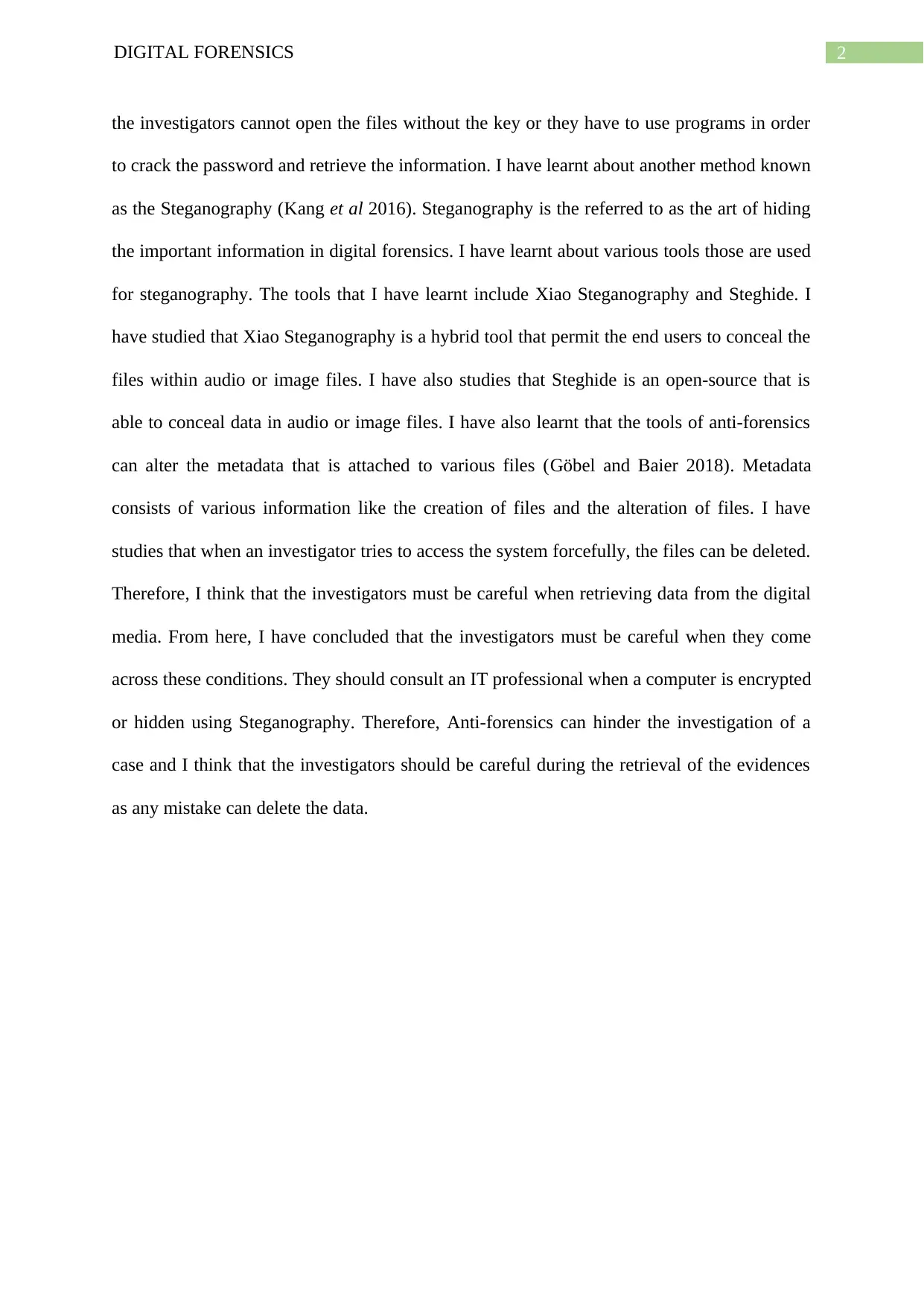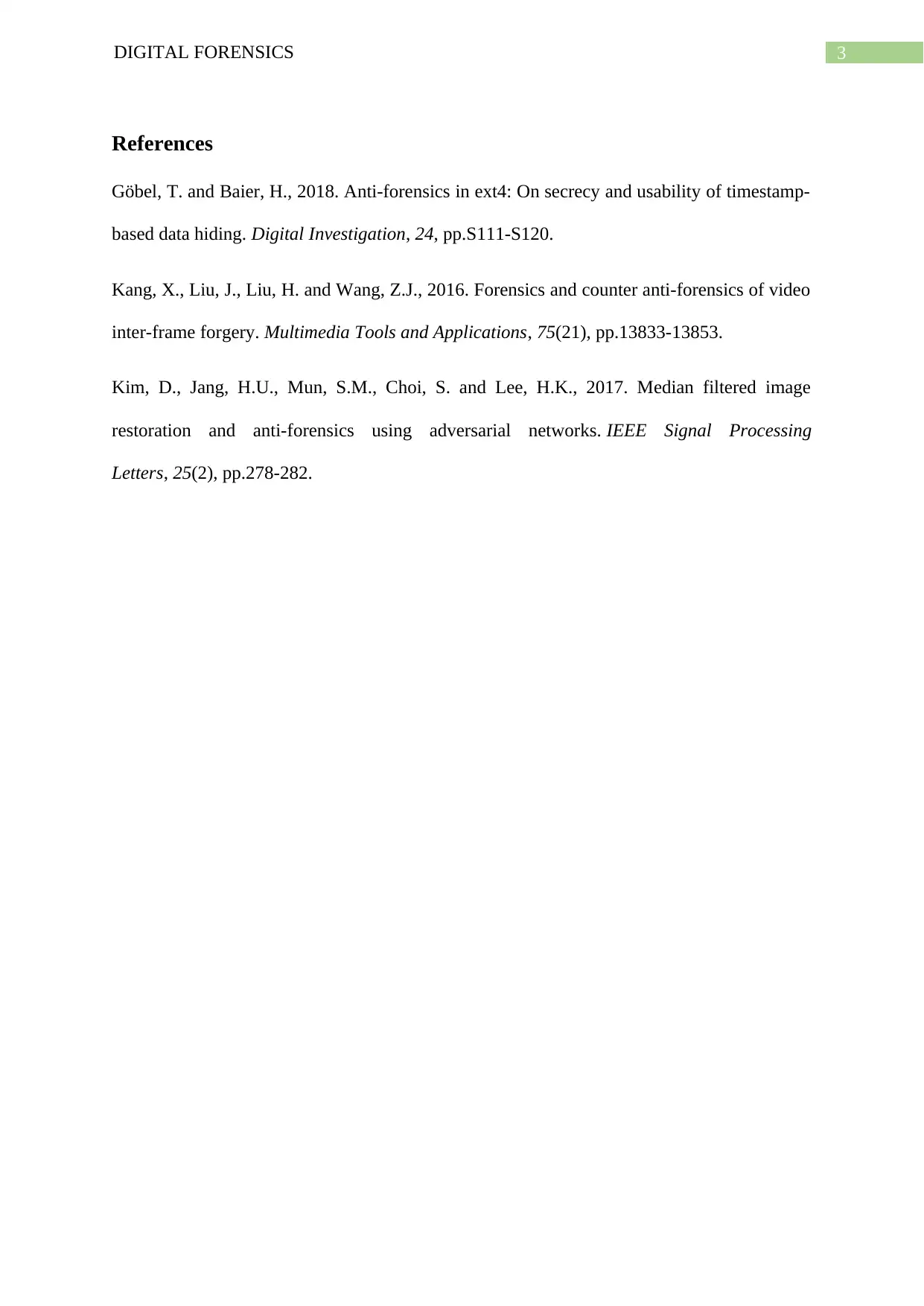Digital Forensics Report: Anti-Forensics and Data Recovery Methods
VerifiedAdded on 2022/09/09
|4
|747
|14
Report
AI Summary
This report delves into the realm of digital forensics, focusing on anti-forensic techniques used to hinder investigations. The student explores various methods of data hiding, including altering file headers, splitting files, utilizing slack space, encryption, and steganography. The report highlights the challenges these techniques pose to investigators and discusses tools like Xiao Steganography and Steghide. The author emphasizes the importance of careful data retrieval and the need for IT professional consultation in complex cases. Furthermore, the report touches upon incident response, emphasizing the need for preparedness, technical knowledge, and coordination. The student concludes by underscoring the critical need for investigators to remain vigilant and adapt to evolving anti-forensic practices. The report also briefly touches on the importance of incident response, business continuity, and disaster recovery in the context of digital forensics.
1 out of 4











![[object Object]](/_next/static/media/star-bottom.7253800d.svg)